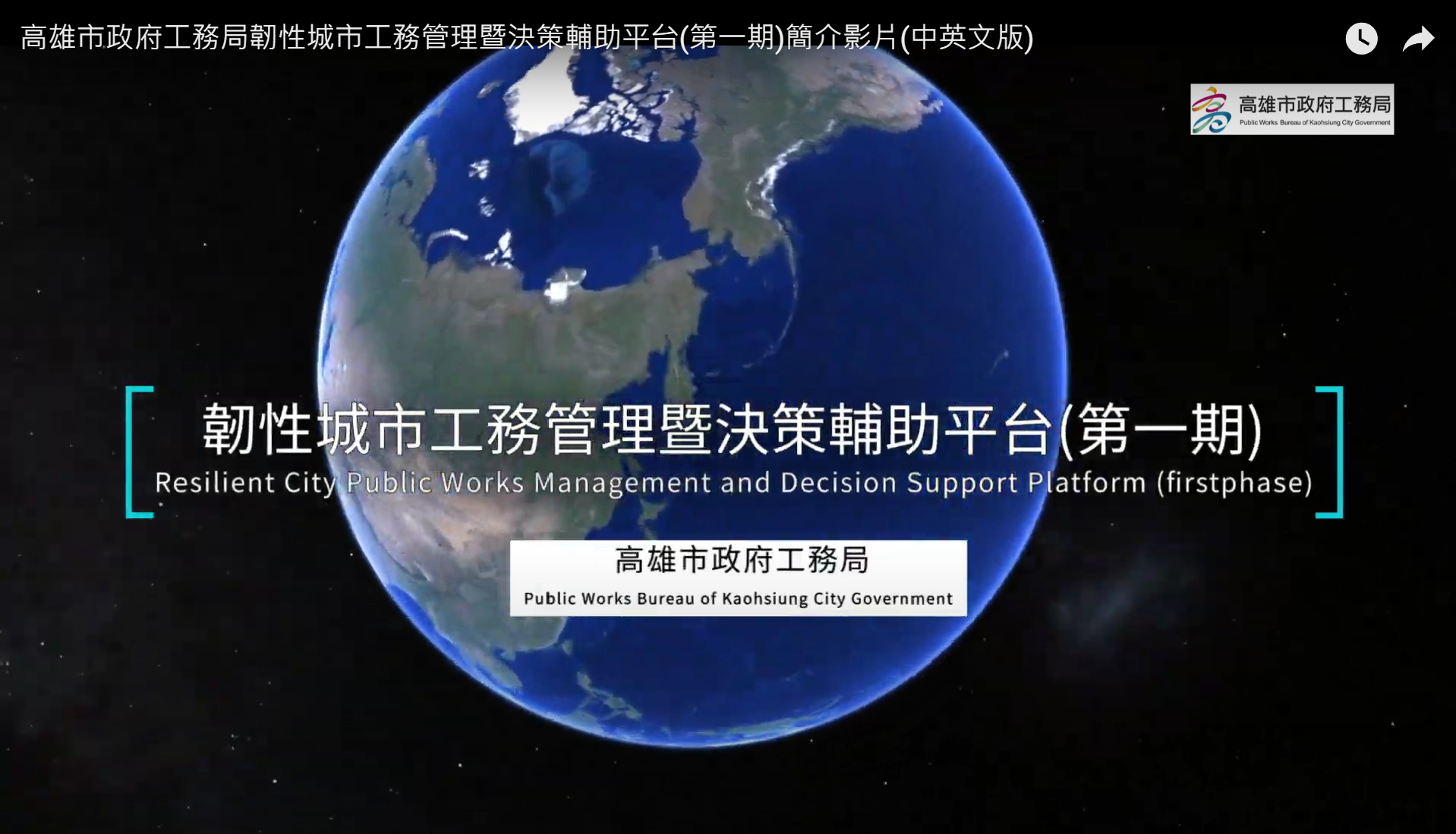Digital Twin 5D Smart City Public Works Management and Decision Support Platform
The 5D Digital Twin Smart City Public Works Management and Decision Support Platform integrates ICT technologies to consolidate existing subsystems of the Public Works Bureau and cross-departmental IoT data, including: building structural safety monitoring, underground pipeline information, road excavation permits with real-time construction footage, smart streetlights, building carbon/water footprint calculation and monitoring, construction data archives, major project documentation, Minzu Road utility tunnel, earthquake-induced road blockage risk analysis for disaster prevention, slope/bridge monitoring, and urban flood sensors from the Water Resources Bureau. The platform further incorporates 3D reality modeling, big data, and AIoT innovations to establish Kaohsiung's City Digital Twin Platform, enhancing engineering management efficiency and intelligent decision-making capabilities for disaster response strategies.
Digital Governance Services for Public Works
Building Structural Safety Monitoring
Using AI algorithms, digital twin buildings enable real-time structural monitoring. During disasters, the system automatically reports building conditions, assists in assessing post-earthquake structural damage, and provides reinforcement references. This technology will expand to aging buildings, nursing homes, and critical infrastructure to improve post-disaster response efficiency.
Building Carbon/Water Footprint Monitoring & Analysis
Smart water/electricity meters installed in buildings track peak/off-peak consumption patterns. Real-time data analysis identifies energy waste sources, enabling optimized resource allocation strategies. ISO-compliant calculation methods estimate buildings' greenhouse gas emissions.
Construction Site Safety Alerts
Sensors installed on steel sheet piles monitor construction sites in real-time. AI algorithms calculate warning thresholds - immediate alerts notify personnel when excavation errors or equipment misuse exceed safety limits, preventing adjacent structure damage.
Earthquake Road Blockage Analysis & Rescue Route Planning
- Analyzes seismic risks (Mw6.6-7.2) from active faults near Kaohsiung
- Predicts road blockage risks from collapsed buildings/bridges using seismic simulations
- Classifies risk levels for rescue units and establishes disaster relief networks with shelter locations
Street Tree Collapse Prevention
Features proprietary tilt sensors demonstrating real-time angle measurement through interactive displays, preventing tree falls that could damage properties.
Slope Safety Monitoring
Combines LiDAR scanning, 3D aerial surveys, inclinometers, rain gauges, and water level sensors. AI estimates safety thresholds, successfully predicting slope collapses during 2024 Typhoon Kaemi with 2-hour advance warnings.
Smart Decision Support
Integrates 3D models of buildings, roads, bridges, streetlights, parks, and underground utilities into a unified platform. Enables remote infrastructure management and accelerates disaster response decision-making by 60%.
Project Highlights
Digital Governance Enhancement
- Centralized 3D infrastructure visualization reduces on-site inspections by 45%
- Automated data filtering cuts decision-making time by 70%
- Carbon emission dashboards inform city-wide decarbonization policies
Public Safety Improvements
- Disaster simulations identify 23 urban vulnerability hotspots
- Standardized engineering protocols improve project quality by 35%
- Earthquake response time reduced from 4 hours to 15 minutes
Future Development
The platform will expand to 12,000 public buildings by 2026 and serve as a model for other Taiwanese cities. Ongoing integration with national energy systems enables bidirectional data verification, enhancing emission tracking accuracy by 92%.
